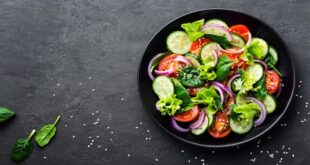Many people’s diets revolve around meat. On the other hand, cooking procedures can impact meat’s quality and nutritional value. Meat undergoes a variety of transformations as it is cooked. In addition, it offers pointers on the healthiest ways to prepare food—places like Pendle hill meat market high-quality meat in Pendle.
Your Meat’s Cooking Methods Are Important
According to estimations, humans have now been cooking meat for 250,000 years. Cooking beef softens the tough connective tissue and fibres, making it more easily chewed and absorbed. It also improves the absorption of nutrients.
Salmonella and E. coli can cause food poisoning, leading to illness or death if they aren’t killed when meat is cooked correctly.
However, it’s important to note that heating meat can lower its antioxidant capacity.
Cooking meat also results in the loss of nutrients. The degree to which that occurs is heavily impacted by the preparation technique used in the cooking process.
To make matters worse, cooking meat at high temperatures for an extended length of time might produce hazardous substances that raise the possibility of contracting a disease.
To optimise the health advantages of eating meat, it is essential to use cooking methods that limit nutritional loss and create the least hazardous chemicals.
This will give you knowledge of how various cooking methods impact meats.
Roasting and baking are two methods of preparing food.
Both roasting and baking involve dry heat, a standard cooking method. There are two distinct techniques of cooking meat: dry heat and moist heat.
Raising the meat in a roasting pan is what most people mean when they say “roast”. It is common for roasting pans to have a rack to hold the heart above the dripping liquids.
With a microwave rotisserie, you may also cook meat on a spit in the middle of the oven. Cooking vast portions of meat or whole animals, including chickens or turkeys, is frequently done.
On the other hand, red meat is usually baked rather than grilled. The meat is baked in a covered or uncovered baking dish.
Roasting and baking meat at temperatures between 300°F and 425°F (149°C and 218°C) take 30 minutes or longer, depending on type and pork chop. Healthy cooking methods such as roasting and baking result in less vitamin C loss. The fluids from the meat might lose up to 40% of its B vitamins when it is cooked for an extended period at a high temperature (6).
These liquids can be collected and served with meat to limit nutrient loss, commonly referred to on menus as au jus.
It can be grilled or broiled.
Grilling and heating are high-temperature cooking procedures that use dry heat and high temperatures.
An outdoor grill or barbeque is the preferred method of grilling because the heat source is immediately below the meal. Grilling takes place at temperatures ranging from 190°C to 450°F.
The broiler on your oven is a typical example of a heat source that originates from above while broiling food. Broiling is done at temperatures between 260°C and 288°C, known as the “throwing” process.
It is very common to grill meat, especially steak and hamburgers, because grilling produces a great flavour.
It’s unfortunate, but this way of cooking can lead to the generation of potentially dangerous compounds.
Fat melts and falls onto the grill or frying surface when cooked at high temperatures. Aromatic hydrocarbons (PAHs) can rise to the surface and penetrate the flesh.
Several cancers, including breast and pancreatic, have been associated with PAHs.
A study found that drippings can lower PAH production by up to 89 per cent.
Both grilled and broiling can lead to a buildup of chemicals called advanced glycation (AGEs).
Heart disease, kidney illness, and skin ageing have all been related to the risk of AGEs.
They are the byproducts of a chemical process between carbohydrates and proteins within the body. When food is cooked at high temperatures, it can also form.
A study discovered that broiled meat contained more AGEs than a steak cooked in other ways.
AGEs can be reduced by cooking meat quickly and removing it from the heat before becoming brown.
Cooking in a slow-moving manner
Using moist heat, simmering, poaching, and stewing are examples of the same culinary technique.
Using this method, you might expect lower temperatures and longer cooking times than you would with conventional cooking methods.
The cooking liquid’s temperature determines which of three ways to use:
- Poaching temperatures range from 60 to 82 degrees Fahrenheit.
- Cooking at a temperature of 160–180°F (71–82°C)
- Heating: 185–200°F (85–93°C)
- Cooking beef for an extended period at temperatures more than 200°F (93°C) may lead the proteins to become more authoritarian.
To preserve the delicate flavour of poultry, fish and duck, poaching requires less time in the kitchen than stewing or simmering.
At low temperatures, moist heat can reduce the production of AGEs, according to studies (16Trusted Source).
Slow cooking methods like stewing and boiling, on either hand, can deplete foodstuffs like meat and poultry of B vitamins.
Up to 60 per cent of the B vitamins may well be lost from the beef as its juices evaporate. Fortunately, these nutrient losses can be considerably reduced by ingesting the meat’s fluids as part of a soup.
Fried and Stir-Fried Foods
Sweat-cooking refers to the process of browning meat over high heat in a wok, frying pan, or similar vessel.
An essential distinction between stir-frying and panfrying is that the food in the former is constantly turned or swirled with a spatula while it cooks.
Despite the high heat, the cooking durations are pretty brief, ensuring that the meat remains succulent and flavorful.
In addition to preserving nutrients, these cooking methods are less prone than others to oxidise the cholesterol found in fatty meats. Heart disease is linked to an increased risk of oxidised cholesterol (17Trusted Source).
Panfrying and stir-frying, on the other hand, have some disadvantages.
Compounds that can cause cancer are heterocyclic amines (HAs). When meat is cooked to a high temperature, it creates these bubbles. According to research, HAs frequently form when meat and poultry are fried in hot oil.
Antioxidant-rich fruits, vegetables, herbs, and spices can help minimise the development of HAs when marinating meat. According to one study, 90 per cent of the HAs in a marinade were reduced when herbs were added to the Pendle hill meat market.
When frying or stir-frying, make sure to use healthy fat.
Polyunsaturated fats predispose most vegetable or seed oils to oxidation at high temperatures. Oxygenated alkenes, potentially cancer-causing compounds prevalent in cooking emissions, can be formed by heating these oils.
During panfrying and stir-frying, palm and olive oils produce fewer aldehydes than veggie and seed oils.
Coconut oil, lard, and tallow are other healthy meal fats that can withstand high heat.
 BESTCITYTRIPS
BESTCITYTRIPS




